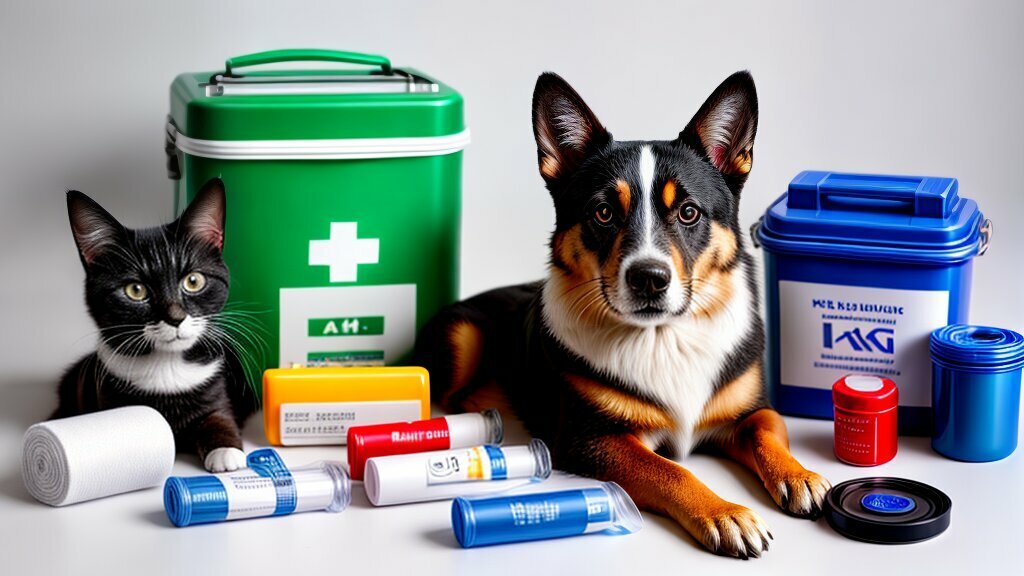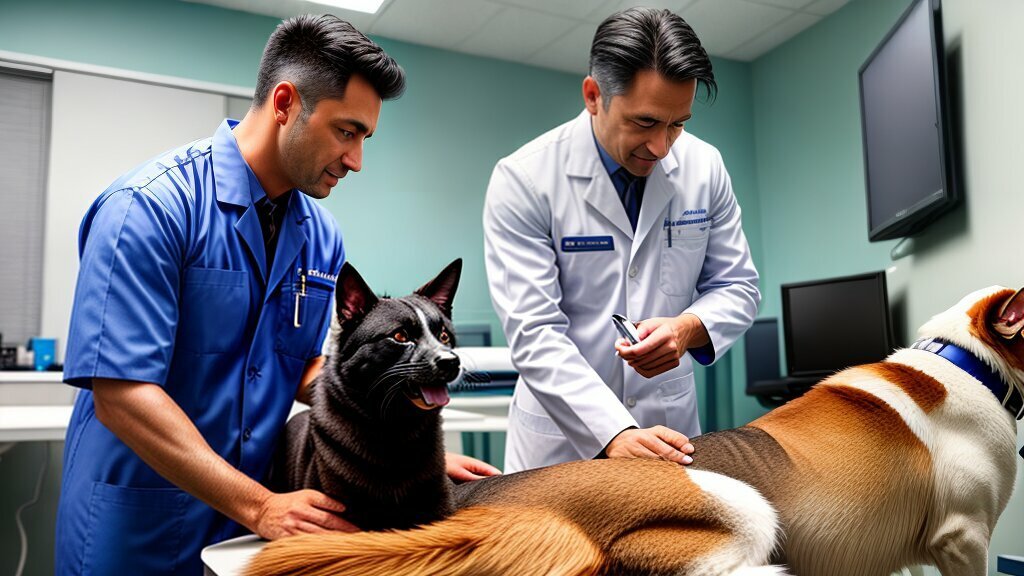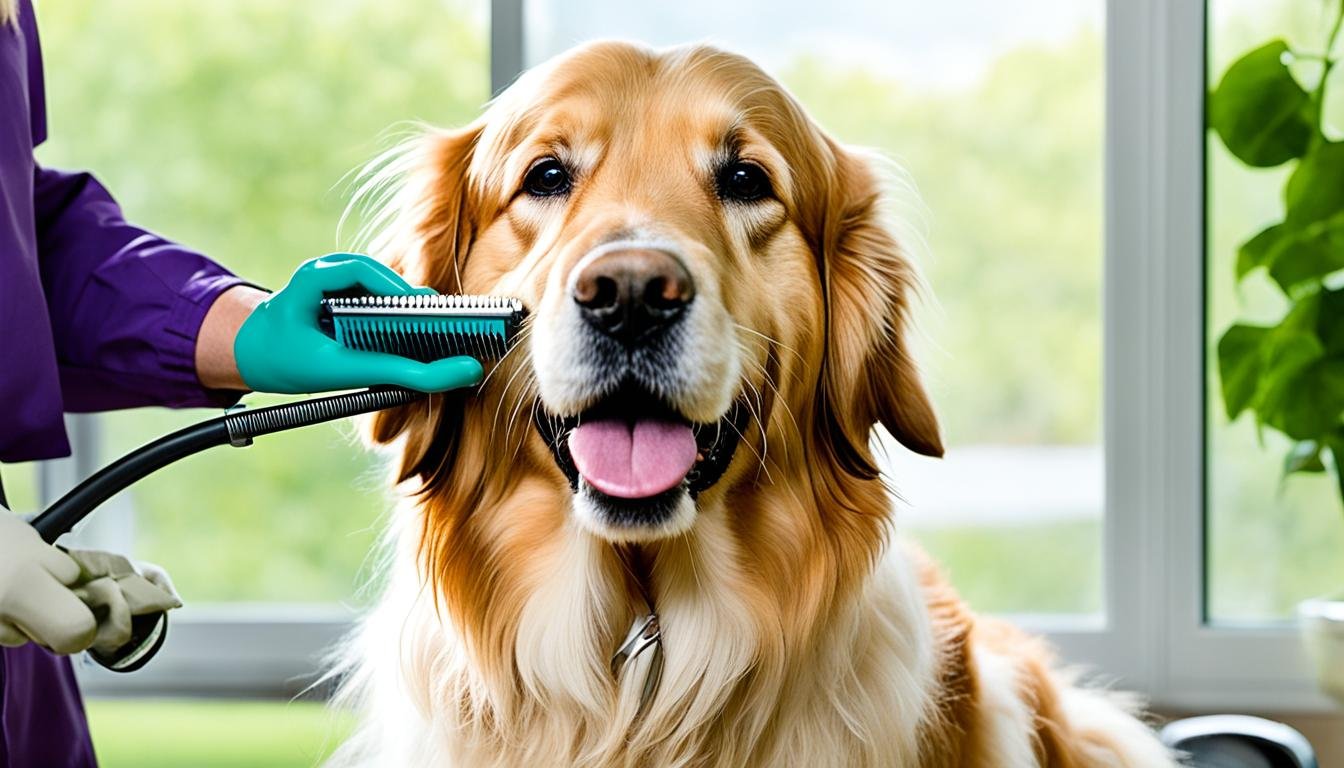Pet First Aid Training: Expert Tips for Emergency Pet Care
February 29, 2024 | by pethealthahead.com

As a pet owner, it is important to be prepared for any situation. Accidents and emergencies can happen at any time, and being equipped with the knowledge and skills to handle them can make all the difference. Pet first aid training is an essential component of responsible pet ownership, and can be the key to saving your pet’s life in a crisis.
Learning basic pet first aid techniques can help you provide immediate care to your pet, before professional help is available. In this article, we will provide expert tips on pet first aid training and emergency pet care, including basic first aid techniques, how to recognize signs of emergencies, and when to seek professional veterinary care. We will also discuss the importance of pet health insurance and how it can provide a financial lifeline in the event of unexpected medical expenses.
Why Pet First Aid Training Matters
Accidents and emergencies can happen to pets at any time. Even with the best care, pets can get injured or fall ill unexpectedly. That is why having knowledge of pet first aid techniques is vital for pet owners. Being able to provide immediate care to a pet in distress can be the difference between life and death, especially when professional help is not readily available.
Pet first aid training matters because it can save lives. By learning basic techniques such as CPR for pets, wound care, and handling common injuries, pet owners can be better prepared for emergencies. This can lead to faster and more effective intervention, which can ultimately help save a pet’s life.

Moreover, pet first aid training can give pet owners peace of mind. Knowing that they have the skills necessary to handle emergency situations can alleviate anxiety and stress associated with potential emergencies. This can contribute to better overall pet care and a stronger bond between pet owners and their furry friends.
“Pet first aid training matters because it can save lives.”
Emergency situations can be chaotic and stressful, and pet owners may not always have immediate access to a veterinarian. Therefore, pet first aid training is a critical tool to have in a pet owner’s arsenal. It can equip pet owners with the knowledge and skills necessary to handle emergency situations with confidence and reduce the impact of a potential crisis.
Basic Pet First Aid Techniques
Pet first aid training equips pet owners with the essential skills needed to handle emergency situations. While it is crucial to seek professional veterinary care during a pet emergency, administering basic first aid can save your pet’s life before they receive professional help. Here are some basic techniques that pet owners can learn and practice:
| Technique | Description |
|---|---|
| CPR for pets | In the event that your pet has stopped breathing, performing CPR can help keep oxygen flowing to their lungs and brain. The technique involves chest compressions, artificial respiration, and checking for a pulse. |
| Wound care | If your pet has a cut or wound, it is important to clean the affected area to prevent infection. This can be done by flushing the wound with clean water or a saline solution, and gently patting it dry with a clean cloth. Apply an antiseptic and bandage, if possible. |
| Handling common injuries | Common injuries such as cuts, burns, and fractures require immediate attention. It is important to keep your pet calm and immobile, and to avoid aggravating the injury. If a bone is broken, use a splint to immobilize the affected area. |
It is important to note that these techniques are not a substitute for professional veterinary care, and should only be administered if there is no other option. Pet owners should always seek professional medical attention for their pets as soon as possible.

Pet First Aid Kits: Essential Items to Include
When it comes to pet emergencies, having a well-equipped first aid kit can make all the difference. Whether it’s a cut on the paw or difficulty breathing, having the necessary supplies on hand can help you provide immediate care to your pet. Here are some essential items to include in your pet first aid kit:
| Item | Purpose |
|---|---|
| Gauze pads and rolls | To cover and protect wounds |
| Adhesive tape and bandages | To secure gauze pads or wraps |
| Antiseptic wipes or spray | To clean wounds and prevent infection |
| Hydrogen peroxide (3%) | To induce vomiting in case of poisoning (only under veterinary guidance) |
| Saline solution | To flush out eyes or wounds |
| Tweezers or hemostat | To remove ticks or debris from fur or skin |
| Rectal thermometer and lubricant | To monitor body temperature and detect fever or hypothermia |
| Emergency contact information | To have your veterinarian’s phone number, as well as a 24/7 emergency clinic, pet poison helpline or nearest animal hospital and any necessary medical notes readily available |

Remember to periodically check the items in your pet first aid kit and replace expired or missing items. Keep the kit in an easily accessible place and inform all family members and pet caregivers about its location.
Recognizing Signs of Pet Emergencies
As a responsible pet owner, it’s vital to be able to recognize when your pet is experiencing an emergency. Prompt action could save your pet’s life. Here are some signs to look out for:
- Breathing difficulties: If your pet is panting excessively, has trouble breathing, or has blue gums or tongue, it could be a sign of respiratory distress.
- Excessive bleeding: Heavy bleeding from a wound or orifice, or bleeding that does not stop after applying pressure, could indicate a serious injury.
- Seizures: Seizures are a neurological emergency and require immediate veterinary attention.
- Loss of consciousness: If your pet faints, collapses, or goes into a stupor, it could be a sign of severe distress or injury.
- Choking or vomiting: If your pet is choking, or vomiting repeatedly, it could indicate a blockage or poisoning.
If you notice any of these signs, it’s essential to act quickly. Contact your veterinarian or emergency veterinary clinic immediately for advice and follow their instructions. Remember, time is of the essence in pet emergencies.

Handling Pet Emergencies: Dos and Don’ts
When faced with a pet emergency, it is essential to remain calm and take appropriate action. It’s crucial to remember that a panicked response can make the situation worse.
Do:
- Assess the situation and prioritize your pet’s safety. Clear any potential hazards and ensure that the immediate area is safe.
- Approach your pet with caution and confidence. Injured animals may be scared and may act aggressively, so be prepared to restrain them if necessary.
- Administer basic first aid techniques that you have learned, such as CPR or wound care, if appropriate and necessary.
- Call your veterinarian for guidance or take your pet to an emergency veterinary clinic if the situation requires immediate professional attention.
Don’t:
- Panic or become overly emotional, as this can increase your pet’s stress levels and escalate the situation.
- Attempt to perform advanced medical procedures if you are not qualified to do so, such as attempting to set a broken bone.
- Administer medication without the advice of a veterinarian.
- Delay seeking professional veterinary care, as this can lead to further complications and even death.
Remember, your pet’s health and safety should always come first. By remaining calm, practicing basic first aid techniques, and seeking professional veterinary care when necessary, you can ensure that you are taking the appropriate steps to address any pet emergency.

Seeking Veterinary Care: When to Call or Visit
During a pet emergency, it is essential to seek professional veterinary care as soon as possible. Knowing when to call a veterinarian or visit an emergency veterinary clinic can mean the difference between life and death for your pet.
If your pet experiences any of the following symptoms, it is best to seek veterinary care immediately:
- Difficulty breathing
- Loss of consciousness
- Persistent vomiting or diarrhea
- Seizures or convulsions
- Excessive bleeding
- Signs of extreme pain or distress
It is also important to keep in mind that some symptoms may seem less urgent but still require professional attention. These may include:
- Limping or difficulty walking
- Loss of appetite or lethargy
- Changes in urination or defecation
- Eye or ear problems
- Unexplained weight loss
When in doubt, it is always better to err on the side of caution and seek veterinary care. Pet owners should have contact information for their regular veterinarian as well as a local emergency veterinary clinic readily available. In case of an emergency, calling ahead can also help the veterinary staff prepare for your pet’s arrival.

Remember that time is of the essence in a pet emergency. By seeking professional veterinary care promptly, you can ensure that your pet receives the best possible chance of a positive outcome.
Pet Health Insurance: A Lifeline for Emergency Pet Care
As a pet owner, you want to provide the best possible care for your furry friend. However, medical emergencies can happen unexpectedly and can lead to extensive veterinary bills. This is where pet health insurance comes in, providing a financial safety net to help you cover the cost of emergency veterinary care.
Pet health insurance plans offer a variety of coverage options, including accident and illness coverage, wellness and preventive care, and even coverage for alternative therapies. By investing in a pet insurance plan, you can have peace of mind knowing that you can afford the best possible care for your pet in the event of an emergency.

When researching pet insurance plans, it’s important to compare different providers and policies to find the one that best fits your needs and budget. Many pet insurance companies offer customizable coverage options, allowing you to tailor your plan to your pet’s specific health needs and your financial situation.
Some factors to consider when choosing a pet insurance plan include:
- Coverage options: Make sure the plan covers the type of care your pet needs, such as accident and illness coverage, wellness and preventive care, or coverage for chronic conditions.
- Premiums: Consider how much you can budget for your pet’s insurance premiums, and look for plans that offer affordable monthly payments.
- Deductibles: Look for plans with reasonable deductibles that won’t break the bank in the event of an emergency.
With pet health insurance coverage, you can be prepared for any unexpected emergencies that may arise, ensuring that your pet receives the best possible care without causing financial strain. Consider investing in a pet insurance plan to give your pet the gift of a happy and healthy life.
Choosing the Right Pet Insurance Plan
Choosing the right pet insurance plan can be overwhelming, but it is essential to ensure your pet’s well-being and your financial security. Here are some factors to consider when evaluating pet insurance plans:
- Coverage options: Look for a plan that covers your pet’s specific needs, including accidents, illnesses, and preventive care. Some plans also offer coverage for alternative therapies or prescription medications.
- Premiums: Consider the cost of the plan, including monthly premiums, deductibles, and co-pays. Make sure it fits your budget and provides good value for the coverage offered.
- Exclusions and limitations: Read the fine print to understand what is not covered by the plan and any restrictions on coverage, such as pre-existing conditions or breed-specific exclusions.
- New vs. existing conditions: Some plans may not cover pre-existing conditions, while others offer limited coverage for existing conditions. Understand how the plan handles new and existing conditions to make an informed decision.
- Customer service: Choose a provider with good customer service and a reputation for responding promptly and effectively to claims and inquiries.
- Reviews and ratings: Research the provider’s reputation and ratings from other pet owners and independent review sites to get a sense of their overall performance.
By evaluating these factors and comparing different pet insurance providers, you can choose the best plan for your pet’s needs and your budget. Remember that while pet insurance can provide financial protection and peace of mind, it is not a substitute for proper pet care and emergency preparedness.

Understanding Pet Medical Coverage
When choosing a pet insurance plan, it is essential to understand the details of the coverage provided. Pet medical coverage typically includes treatment for accidents, illnesses, and preventive care. However, it is crucial to review the policy thoroughly to know what is included and excluded.
Illness Coverage: Illness coverage extends to treat diseases, such as cancer, infections, and chronic conditions. However, some policies may have a waiting period before providing coverage. It is essential to check the policy’s waiting periods before purchasing.
Accidents Coverage: Accidents coverage provides financial assistance for emergency visits, exams, and surgeries following an accident, such as broken bones or ingestion of foreign objects.
Preventive Care Coverage: Some policies offer coverage for preventative care, such as vaccinations, heartworm testing, and flea and tick prevention. Check whether the preventative care covers regular checkups and routine procedures.
Exclusions: Pet insurance policies have exclusions, which are specific situations, illnesses, or treatments that are not covered. Common exclusions include pre-existing conditions, experimental treatments, elective procedures, and cosmetic surgery. Make sure to read the policy documents carefully and understand the exclusions.
Keep in mind that pet insurance policies vary in coverage and exclusions. Be sure to compare different pet insurance providers and look for the one that best meets your pet’s needs.

Pet insurance coverage can provide peace of mind when it comes to dealing with unexpected veterinary expenses. Understanding the details of pet medical coverage is essential in choosing the right insurance plan for your pet.
The Importance of Regular Veterinary Care
Regular veterinary care is an essential aspect of pet healthcare. It involves routine check-ups, preventive care, and early detection of potential health issues that may escalate into emergencies.
According to the American Veterinary Medical Association (AVMA), pets should receive a comprehensive physical examination at least once a year. During these visits, veterinarians can evaluate the pet’s overall health, administer necessary vaccines, and perform diagnostic tests to detect any underlying health issues that may not be immediately noticeable.
In addition to annual check-ups, regular veterinary care also includes preventive care measures such as dental care, parasite prevention, and nutrition counseling. These measures can help maintain the pet’s overall health and prevent potential health problems from developing.
Regular veterinary care is especially important for senior pets and those with existing health conditions, who may require more frequent visits and specialized care. It is also crucial for pet owners who want to ensure their pets receive the best possible care and avoid the financial burden of emergency veterinary expenses.
By prioritizing regular veterinary care, pet owners can take a proactive approach to their pet’s health and well-being. They can also ensure that their pets receive timely medical intervention, if necessary, and avoid the need for emergency care due to untreated health issues.

Conclusion
Regular veterinary care plays a crucial role in ensuring the overall health and well-being of pets. By scheduling annual check-ups, practicing preventive care measures, and seeking timely veterinary intervention, pet owners can provide their pets with the best possible care and avoid the financial burden of emergency veterinary expenses.
Conclusion
Pet first aid training and emergency pet care are vital skills for pet owners to possess. Accidents and emergencies can happen at any time, and being prepared can mean the difference between life and death for your pet. By learning basic pet first aid techniques, recognizing signs of emergencies, and having a well-equipped pet first aid kit, you can provide immediate care to your pet before professional help is available.
Pet health insurance is also an important consideration to ensure your pet receives timely and appropriate medical care when needed. By understanding the coverage options, comparing plans, and choosing the right pet insurance provider, you can have peace of mind knowing that your pet’s healthcare needs are covered.
Regular veterinary care is crucial for maintaining your pet’s overall health and detecting potential health issues early on. By prioritizing your pet’s well-being and investing in their healthcare, you can ensure they live a happy and healthy life. Remember, pet first aid training, emergency pet care, and pet health insurance are all important aspects of a comprehensive approach to pet healthcare.
RELATED POSTS
View all


